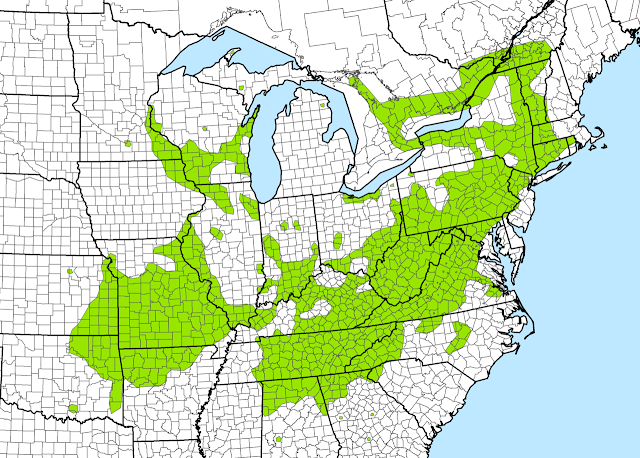The American Walking fern gets its unusual name from the way it grows. It spreads by growing new plants from its leaf tips, and because of this, growth pattern, it seems to walk across the surface of the earth. Although many Native American communities may have used this fern medicinally, it is a documented favorite of the Cherokee. This plant can be found in Connecticut.
About American Walking Fern
The American Walking Fern has long narrow evergreen leaf tips. It is different from all other ferns because its leaves often turn back on themselves and root. The leaves are not sub-divided like most other ferns and are narrow and lance-shaped. Sori or spores are numerous on the underside of the leaves, they are initially yellow and then, turn brown as they mature. The stalk of the walking fern is reddish brown at the base and turns green above the base. It grows up to a foot high and has a six-inch spread across the ground. It prefers medium shade and can be found in thin rocky soil. It spreads by developing new shoots from the tips of fronds where they touch the ground. It does not spread and form new plants from its roots.
Medicinal Uses
The only documented Native American use for this plant is from the Cherokee. They make a compound of this fern to help reduce breast swelling. They also make a decoction of the plant and rub it on swollen breasts. The decoction of the entire plant was also taken to induce vomiting to reduce swollen breasts.
Did You Know...
The genus of this plant is Spleenworts, which sounds like it came out of a Harry Potter movie! The botanical name of this fern is Asplenium rhizophyllum.
The name rhizophyllum means root leaf reflecting its ability to root from the tip of the frond.
It is a close relative of Asplenium ruprechtii that grows in East Asia.
This fern is endangered in Mississippi, New Hampshire, and Rhode Island. In Maine, the last documented record of this plant is from a ledge in Readfield, Maine last seen in 1932.



No comments:
Post a Comment